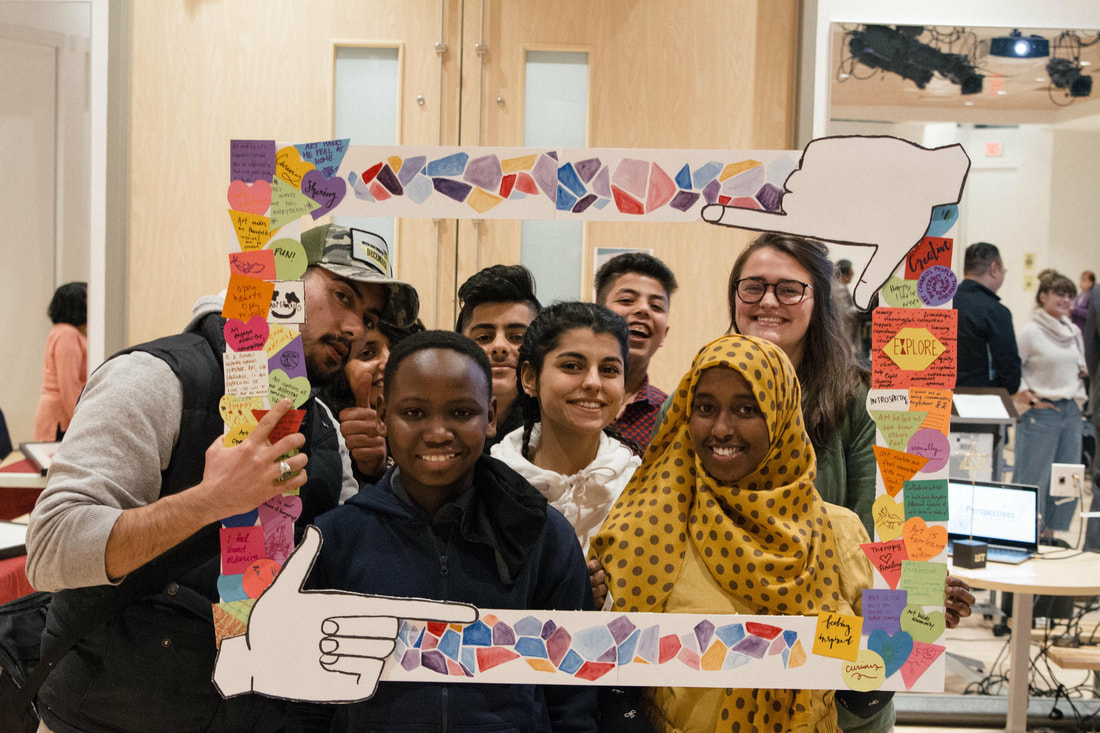|
Content warning: there is use of a racial slur in the content.  De Mule Ah De World is a multimedia exploration of what it means to be a Black woman through photography, music and spoken word poetry. Spoken word artist Mel Vee interviewed seven Black women from diverse sexual orientations and religious, ethnic and cultural backgrounds shared their experiences of womanhood and the shifting perspectives around the unique convergence of both Blackness and womanhood and distilled them into a multimedia experience. Before Intersectional feminism became embedded into the feminist and social justice lexicon, Black American author and anthropologist Zora Neale Hurston (1891-1960) spoke of the unique texture of existing at the bounds of multiple marginalized identities in her seminal work, Their Eyes Were Watching God. So de white man thrown down de load and tell de nigger man tuh pick it up. He pick it up because he have to, but he don't tote it. He hand it to his womenfolks. De nigger woman is de mule uh de world so fur as Ah can see. Ad been prayin' duh it tuh be different wid you. Lawd, Lawd, Lawd!  Spoken word artist Mel Vee Spoken word artist Mel Vee The above quote forms the intellectual background for this project and inspired the name. The metaphorical load that Hurston refers to is the unique position of belonging to at least two if not more maligned identities- Hurston was unapologetically queer at a time when that was almost certainly a death sentence. Huston in this quote begins to hint at the complexities of the Black woman's position in North American society as being at the bottom of the hierarchy, with the implications that Black women will serve and perpetually tend to the needs of others. The mule is a potent and subversive symbol for Black womanhood. The mule, neither a horse or a donkey but a combination of the two, enjoys the privileges of neither but bears the burden of both. The mule is also a symbol of servitude and labour, known for its strength and ability to bear weight. Black womanhood exists in a state of precarity- racial justice struggles often center the Black male experience while gender equality struggles center white womanhood. Black women are often expected to cater to sacrifice one of our identities in the supposed service of a greater good, a good which has no qualms with our invisibility and silence. Neither male nor white, Black women are left to carve out our own spaces and define ourselves. As an artist, it is my practice to center the voices and unique textures to the experiences of marginalized people. My new found desire to study photography was precisely to address the dearth of representation of Black women both behind and in front of the lens. I love and cherish the beauty of Black women and believe firmly in centering and showcasing our features, experiences and resilience from our own perspective. Too often, the bodies of Black women are exploited and put on display for the gain of others. It was the expressed design of this project to create a project that is by us and for us. Yet it is imperative for all types of people to hear and witness our experiences for the sheer fact that Black women's stories are human stories and are part of our shared humanity. To believe that the experiences of Black women are only relevant to us is to exclude us from the source of our humanity. Our stories must be heard and witnesses by all. It is also my aim to subvert the narrative that Black people don't exist in Alberta. The majority of the women I interviewed were either born and raised or spent the majority of their lives in Calgary, Edmonton or Alberta generally. Our stories are the stories of Alberta/ Treaty 7.
0 Comments
|
Archives
January 2024
|
 RSS Feed
RSS Feed
